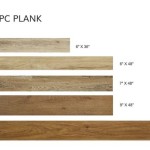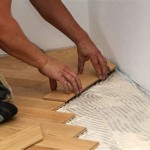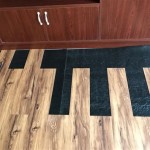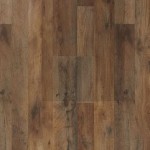Flooring Ideas for Stairs and Landings
Selecting the appropriate flooring for stairs and landings requires careful consideration of aesthetics, durability, safety, and budget. These high-traffic areas demand materials that can withstand constant use while contributing to the overall design scheme of the home. The choice of flooring impacts not only the visual appeal but also the acoustic properties and maintenance requirements of the space. This article will explore various flooring options suitable for stairs and landings, highlighting their respective benefits and drawbacks to aid in making an informed decision.
Hardwood: A Classic and Durable Choice
Hardwood flooring remains a popular choice for stairs and landings due to its timeless elegance, durability, and potential for increasing property value. The inherent beauty of natural wood, with its varied grains and tones, adds warmth and character to any home. Hardwood is available in a wide range of species, each offering distinct characteristics in terms of hardness, color, and grain pattern. Popular choices include oak, maple, walnut, and cherry. The hardness of the wood is particularly important for stairs, where resistance to dents and scratches is crucial. Janka ratings, which measure the resistance of wood to indentation, provide a useful metric for assessing the suitability of different species. For high-traffic stairs, opting for woods with higher Janka ratings is advisable.
The installation of hardwood on stairs typically involves using treads (the horizontal part of the stair) and risers (the vertical part of the stair). These can be made from solid hardwood or engineered hardwood. Solid hardwood offers superior longevity and can be refinished multiple times, extending its lifespan. Engineered hardwood, on the other hand, consists of a thin layer of hardwood veneer bonded to a core of plywood or fiberboard. While not as durable as solid hardwood, engineered hardwood is more resistant to moisture and temperature fluctuations, making it suitable for environments with varying humidity levels. When selecting hardwood for stairs, it is important to consider the thickness of the tread. Thicker treads provide greater stability and reduce the likelihood of warping or cracking. The treads are typically installed using construction adhesive and fasteners, ensuring a secure and long-lasting bond to the stair structure.
The finish applied to hardwood flooring plays a significant role in its durability and aesthetics. Polyurethane finishes are commonly used due to their resistance to scratches, scuffs, and water damage. These finishes are available in various sheens, ranging from matte to high gloss, allowing homeowners to achieve the desired look. Oil-based polyurethane finishes offer superior durability but may yellow over time. Water-based polyurethane finishes are more environmentally friendly and less prone to yellowing, but they may require more coats for adequate protection. Regular maintenance of hardwood stairs includes sweeping or vacuuming to remove dirt and debris, as well as occasional cleaning with a hardwood floor cleaner. Refinishing may be required every 10-15 years, depending on the level of traffic and the type of finish applied.
Carpet: Comfort and Safety Considerations
Carpet provides a soft and comfortable surface underfoot, making it a popular choice for stairs and landings, especially in homes with young children or elderly individuals. Carpet offers several advantages, including noise reduction, insulation, and improved safety by providing slip resistance. The softness of carpet can cushion falls and minimize injuries. When selecting carpet for stairs, it is important to consider the fiber type, pile height, and density. Different carpet fibers offer varying levels of durability, stain resistance, and comfort.
Nylon is a synthetic fiber known for its exceptional durability and stain resistance, making it a suitable choice for high-traffic areas like stairs. Polyester is a more affordable option that offers good stain resistance and colorfastness. Olefin is another synthetic fiber that is resistant to fading and moisture, making it a good choice for areas exposed to sunlight or humidity. Wool is a natural fiber that is soft, luxurious, and naturally stain-resistant. However, wool carpets are typically more expensive than synthetic options. The pile height refers to the height of the carpet fibers. Low-pile carpets are generally more durable and easier to clean than high-pile carpets. For stairs, a low-pile or cut-loop carpet is recommended to prevent tripping hazards. The density of the carpet refers to the amount of fiber packed into the carpet backing. Denser carpets are more durable and resist crushing underfoot. A higher density carpet will maintain its appearance longer and provide better cushioning.
Carpet can be installed on stairs using various methods, including the waterfall method, the Hollywood method, and the cap and band method. The waterfall method involves draping the carpet over the edge of each tread, creating a continuous flow of carpet down the stairs. The Hollywood method involves wrapping the carpet tightly around each tread and riser, creating a more tailored and formal look. The cap and band method involves installing a separate piece of carpet on the tread and riser, creating a distinct separation between the two. Regardless of the installation method, it is important to use a high-quality carpet pad to provide cushioning, extend the life of the carpet, and improve sound insulation. Regular maintenance of carpeted stairs includes vacuuming regularly to remove dirt and debris, as well as spot cleaning spills immediately to prevent staining. Professional carpet cleaning should be performed periodically to remove embedded dirt and allergens.
Laminate and Vinyl: Cost-Effective and Versatile Options
Laminate and vinyl flooring offer cost-effective and versatile alternatives to hardwood and carpet for stairs and landings. These materials are known for their durability, water resistance, and ease of maintenance. Laminate flooring consists of a high-density fiberboard (HDF) core with a decorative layer that mimics the appearance of wood, stone, or tile. Vinyl flooring is made from synthetic materials and is available in various forms, including sheet vinyl, vinyl planks, and vinyl tiles. Both laminate and vinyl flooring are available in a wide range of styles, colors, and patterns, allowing homeowners to achieve the desired look at a fraction of the cost of hardwood or stone.
Laminate flooring is relatively easy to install and can be done as a DIY project. Laminate planks typically feature a click-lock system that allows them to be easily joined together without the need for glue or nails. When installing laminate flooring on stairs, it is important to use stair treads and risers specifically designed for laminate. These treads and risers are typically made from thicker laminate and have a rounded edge for safety. The treads and risers are installed using construction adhesive and fasteners, ensuring a secure and stable surface. While laminate flooring is durable, it is not as resistant to water damage as vinyl flooring. Therefore, it is important to clean up spills immediately and avoid using excessive water when cleaning laminate floors. Regular maintenance of laminate stairs includes sweeping or vacuuming to remove dirt and debris, as well as occasional cleaning with a laminate floor cleaner.
Vinyl flooring is highly water-resistant, making it a suitable choice for areas prone to moisture, such as entryways and mudrooms. Vinyl flooring is also relatively easy to clean and maintain. Vinyl planks and tiles are available in a variety of thicknesses and wear layers. Thicker planks and tiles with a thicker wear layer offer greater durability and resistance to scratches and dents. Vinyl flooring can be installed on stairs using construction adhesive. It is important to ensure that the subfloor is clean, level, and dry before installing vinyl flooring. Vinyl stair treads and risers are also available, providing a seamless and professional look. Regular maintenance of vinyl stairs includes sweeping or vacuuming to remove dirt and debris, as well as occasional cleaning with a vinyl floor cleaner. Avoid using abrasive cleaners or scrub brushes, as these can damage the surface of the vinyl.
Other Flooring Options
Beyond these common choices, several alternative flooring options exist for stairs and landings. Tile, particularly porcelain or ceramic, offers exceptional durability and water resistance. However, tile can be cold and hard underfoot, and it requires a skilled installer for proper installation. Cork flooring provides a soft and resilient surface that is naturally sound-absorbing and hypoallergenic. However, cork is susceptible to scratches and dents and requires regular sealing to protect it from moisture. Concrete flooring offers a modern and industrial look and can be stained or polished to achieve a variety of finishes. Concrete is highly durable but can be cold and hard underfoot. Bamboo flooring is an environmentally friendly option that is similar in appearance to hardwood. Bamboo is relatively durable but is susceptible to moisture damage. Each of these options presents a unique set of advantages and disadvantages that must be carefully considered in relation to the specific needs and preferences of the homeowner.

Staircase Carpet Ideas For Your Home Carpetright

What S The Best Flooring For Stairs Direct

The Top 5 Stair Flooring Ideas For Your Home Rods Direct

6 Modern Staircase Interior Design Ideas

Hall Stairs Landing Inspiration Carpetright

How To Install Vinyl Plank Flooring On Stairs In 6 Steps Inc

Stairs Flooring The Best Staircase Materials

15 Stylish Staircase Design Ideas For Your Home

Stairs Flooring The Best Staircase Materials

5 Ways To Put Your Staircase Base And Landing Use
Related Posts








